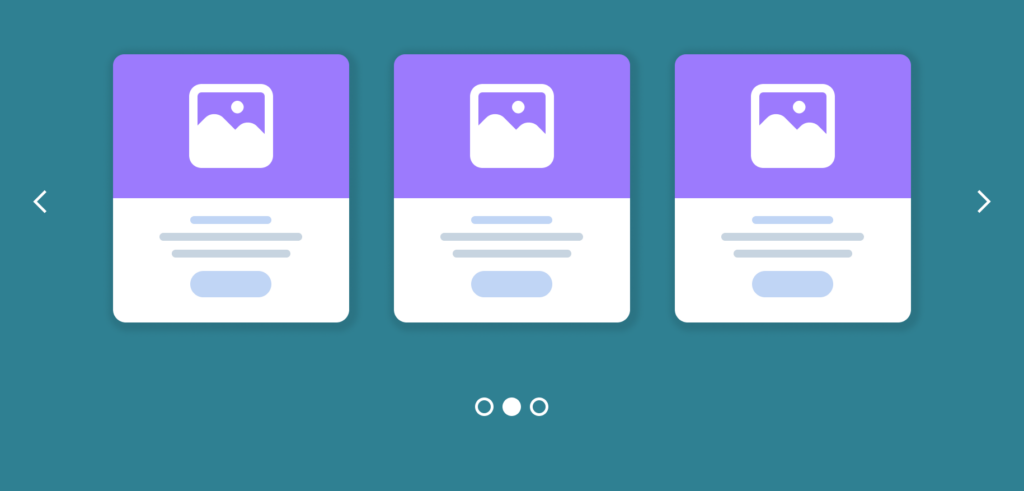In part one of the series, we defined cognitive biases as shortcuts our unconscious minds take to make decisions on our behalf, often for our benefit but sometimes not. If you missed part one, be sure to catch up before diving into part two. In part two, we discuss how cognitive biases affect designers and how to prevent these biases from impairing our work.
The Carousel Comeback: Embracing Modern UX Trends
One of the first biases we must account for is anchoring, where an individual depends too heavily on an initial piece of information when making subsequent judgments. Once we receive information that tells us something is true, we anchor to the belief that it will never change and will always be true. This is particularly difficult to overcome because it seems like we are making informed decisions based on established information. However, the assumption lies in believing, without proof, that the information is still applicable and true.
An example of anchoring bias in UX design is the utilization of carousels. A carousel in UX design is a rotating set of images or content pieces that users can navigate through, typically used to highlight multiple items or features within a limited space.

For a long time, it was believed that carousels shouldn’t be used because testing showed that users didn’t know how to interact with them. However, as users became accustomed to touch screens and swiping sideways, navigating carousels became naturally more intuitive. Designers holding the outdated belief that carousels were ineffective are missing the opportunity to utilize a now, very helpful design option in connecting with users. To counteract this bias, designers must usability test previous information as often as possible to ensure assumptions are based on current truths.
If It Ain’t Broke, Don’t Fix It
Another bias to be cognizant of is system justification, the tendency to defend and bolster the status quo. Existing social, economic, and political arrangements are often preferred, and alternatives disparaged, sometimes at the expense of individual and collective self-interest. In UX design, this bias can be summed up with the phrase, “if it ain’t broke, don’t fix it.” While this advice may seem sound, in design, it would mean that only failure could trigger change, limiting our designs to being just “good enough” rather than striving for the best.
For example, consider a website’s navigation menu that has remained unchanged for years. Initially, it was effective, and users found what they needed without much trouble. Over time, however, the site’s content has expanded, and the navigation menu has become cluttered and confusing. Instead of making incremental tweaks to the menu, a complete redesign to a more modern, user-friendly navigation system (such as implementing a mega menu or utilizing more intuitive categories) would provide a vastly better user experience. “If it ain’t broke, don’t fix it” keeps you reactive. If you want to innovate and rise above mediocrity, you must be proactive by challenging the status quo and asking if something can be done better.
Don’t Fall in Love with Your Designs
Finally, one of the toughest biases to break, confirmation bias. This is the tendency to search for, interpret, favor, and recall information that confirms one’s prior beliefs or values. This bias often goes hand in hand with the Semmelweis Reflex, the tendency to reject new evidence or knowledge because it contradicts established norms or beliefs.
For UX designers, these biases can be summed up by the advice: “Don’t fall in love with your designs.” Although it may sound counterintuitive, this advice reminds designers not to become so attached to their designs that they are unwilling to change or improve them. Designers must focus on creating user-centric designs but must remember they themselves are typically not the user. The solution is to remain open and leverage usability testing and feedback to keep the user at the center of the design process. Overcoming this ensures our designs are the best they can be meeting user needs not simply executing a designer’s vision.
The military conducts an exercise called Red Team, Blue Team, where one team develops a solution to a problem, and the other team independently tries to find flaws in that solution. For UX design, the blue team consists of the designers who conduct research, create the initial designs, and create wireframes. An independent red team then reviews the designs objectively.
To get the most benefit from this exercise, ensure the red team is independent of the blue team and includes a diverse group of participants. Having developers, product managers, strategists, and other disciplines, as well as people of different ages, genders, ethnicities, and socioeconomic backgrounds, will provide unique perspectives and valuable critiques. Inclusivity can greatly enhance the quality of the feedback and the final design.
Awareness of cognitive biases alone does not make UX designers immune to them. Overcoming these biases requires active measures, such as constantly testing assumptions and setting up independent reviews of our work. Designers must embrace the idea that getting something “wrong” is a normal part of the process—a valuable opportunity to learn and improve, not a failure. Teams working with designers should also adopt this mindset, objectively reviewing their work to identify both successes and areas for improvement.
To truly excel in UX design, we must challenge the status quo, remain open to feedback, and strive for continuous improvement based on qualitative and quantitative user feedback. By doing so, we can create designs that not only meet but exceed user expectations.
As we move forward, let’s commit to leveraging cognitive biases responsibly, ensuring they enhance rather than hinder our designs. Stay tuned for the final part of this series, where we’ll explore the dark side of cognitive biases, how they are sometimes used nefariously, and strategies for avoiding pitfalls. Together, we can push the boundaries of design and make a lasting positive impact on user experience.
Ready to take your UX design to the next level? Start by critically examining your current projects for any hidden biases, seek out diverse perspectives, and continually test your assumptions. Let’s create designs that are not just good, but exceptional. Stay tuned for the final part of this series, coming soon!





